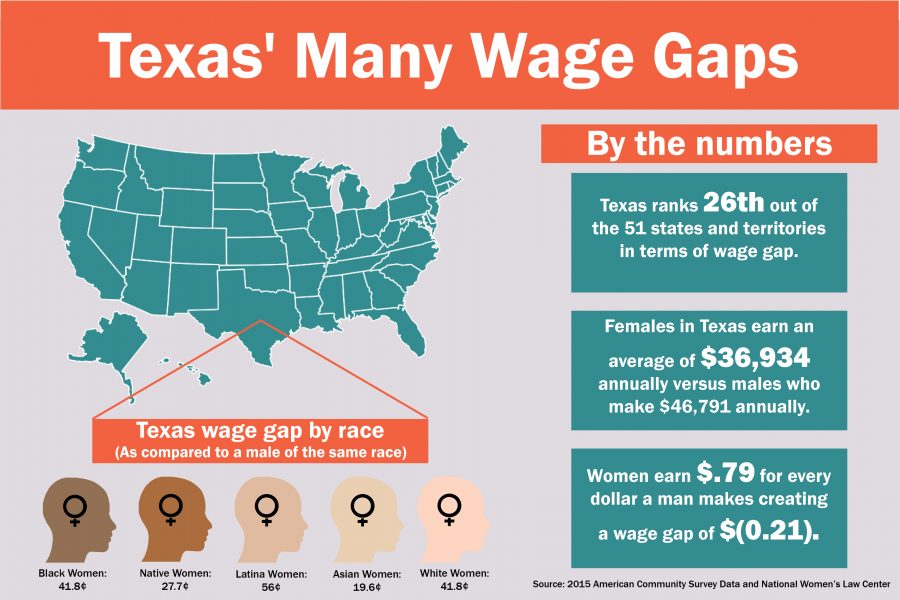Texas has a serious problem with equal pay; it’s existed for years, and the state is not addressing it.
The average Texas woman makes 79 cents for every dollar the average man makes, but that’s a common statistic that doesn’t highlight the real issue. The average black woman in Texas makes 59 cents on the dollar. Even worse, the average Latina woman makes 44 cents for every dollar a white man makes. For Latina women, Texas has one of the highest wage gaps across the United States, and the state has the nation’s second largest Latino population per capita.
Texas has a long history of opposing equal pay. In 2009, the federal government passed the Lilly Ledbetter Fair Pay Act, which extended the time limit for filing discrimination claims in federal courts. 42 states adopted similar legislation, but Texas was not among them.
In 2013, the state Legislature passed a bill designed to remedy the discrepancy between state and federal filing windows, until then-Gov. Rick Perry vetoed its passage. In 2014, the San Antonio Express-News reported that during Gov. Greg Abbott’s tenure as state attorney general, female assistant attorney generals were paid $6,000 less on average — despite generally having more experience — than their male coworkers.
Many consider the wage gap unavoidable, citing women’s lack of professional assertiveness or difference in occupation as a reason for the inequity. Certainly, many factors are at play here. Women are often forced to take more time off for family and maternity concerns. Minority women often lack educational opportunities necessary to attain high-paying jobs. Women on average work in lower paying industries. Despite these concerns, equally qualified female employees still make less than their male counterparts in the same positions.
Texas ranks among the worst states for equal pay among minority women and far from the best for non-minority women. Lower wages throughout a woman’s lifetime amount to approximately $500,000 in losses. This inequity contributes to economic inequality, especially among minority women. Such inequality negatively affects health, increases the chances of unexpected pregnancies or abortions and contributes to domestic abuse.
At the end of 2017’s legislative session, several bills aimed at increasing accountability for gender discrimination remained in legislative limbo. Texas has not made this problem a priority, and members of the Legislature have shown outright disdain for efforts to eliminate it.
Gender inequality is an ancient problem, and eliminating the wage gap will take much more than a single bill. But the state’s unwillingness to approach the issue, or even to align with moderate federal statutes addressing it reflects the underlying disrespect this legislature has for women — especially minority women — within the state.
Anderson is a Plan II and history sophomore from Houston. Follow her on Twitter @lizabeen





















